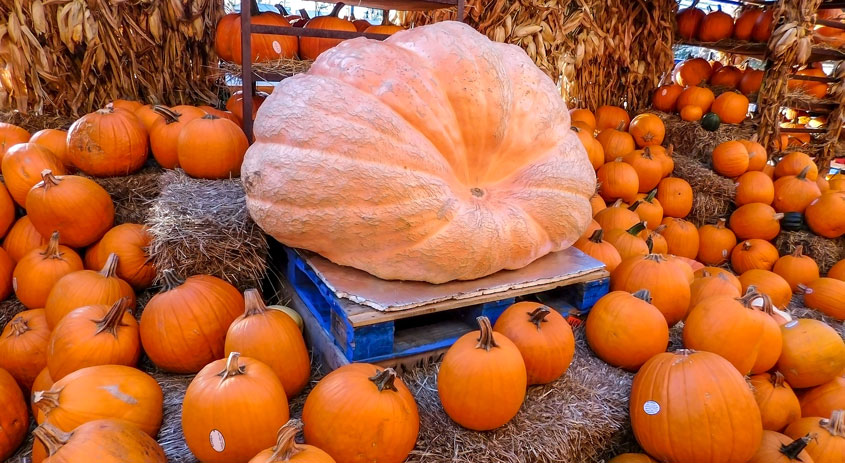Gardeners everywhere look forward to fall harvest, but the most anxiously anticipated harvest might well be that of giant vegetable growers. The fruits of their labor far exceed the size of an ordinary gardener’s. Vegetables grown for competitions are truly gigantic — often weighing more than 1,000 pounds.
One can hardly imagine the mounting excitement at annual weigh-offs as entries are transported in trucks and hoisted onto scales with forklifts or, in some cases, small cranes.
Last October, grower Chad New broke the 2016 Colorado state record of 1,685 pounds when his 1,783-pound pumpkin, Howie, tipped the scales at the Nick’s Garden Center weigh-off in Aurora. (Yes, growers become so attached to their pumpkins that they give them names.) Second place holder (and Howie’s relative) Greta weighed a close 1,729 pounds at the Fort Collins Nursery’s annual competition. She later made a special appearance at Aurora Fire Station 11 to promote Fire Prevention Week while Howie was showcased at the Denver Botanic Gardens where you might have seen her at the October Glow at the Gardens festival.
The connection between Howie and Greta began after Greta’s grower, Brad Bledsoe, went seeking a sound male pollinator. He reached out to Chad New early in the growing season. New gave Bledsoe a tour of his greenhouse and later provided him with Howie’s genetically superior male flowers. The rest, as they say, is history.
Most people agree the secret to growing giant vegetables is to start with the right seeds. Fortunately for the novice, there are lots of giant vegetable growers and associations willing to share seed at a minimal cost. In fact, you may be surprised at the number of seed providers offering products on the internet. To find a reputable grower, you could explore giant grower associations. One place you might start is with World Class Gardening, which facilitates the exchange of authenticated seeds by linking buyers to original growers. You can also hook up with local growers as Bledsoe did by attending the annual weigh-offs in your area and rubbing elbows with the competitors.
Once you find your ideal seed, you will need to find the ideal growing site, considering sunlight and soil pH. Soil pH should be between 6.7–7.0. Since Colorado soils tend to be alkaline (7.5 or more), you might need to enrich your soil with good-quality compost. To extend the growing season, you will need to germinate your seeds early and protect seedlings from variable weather conditions after planting them outside. You will also need to water and apply fertilizer regularly. There’s no room for neglect if you aspire to raising a winner.
Even though we often think about giant pumpkins in October, giant vegetable growers don’t limit themselves to pumpkins alone. Some growers have branched out to other gourds. Others have experimented with green beans, kohlrabi, tomatoes, and sunflowers.
Regardless of what strikes your fancy, there is likely to be someone out there who has tried stretching their green thumb to win a world record and is willing to help you get started.
Master Gardener Vicki Spencer has an eclectic background in conservation, water, natural resources and more.
Want more gardening tips? Click here to previous gardening columns.

